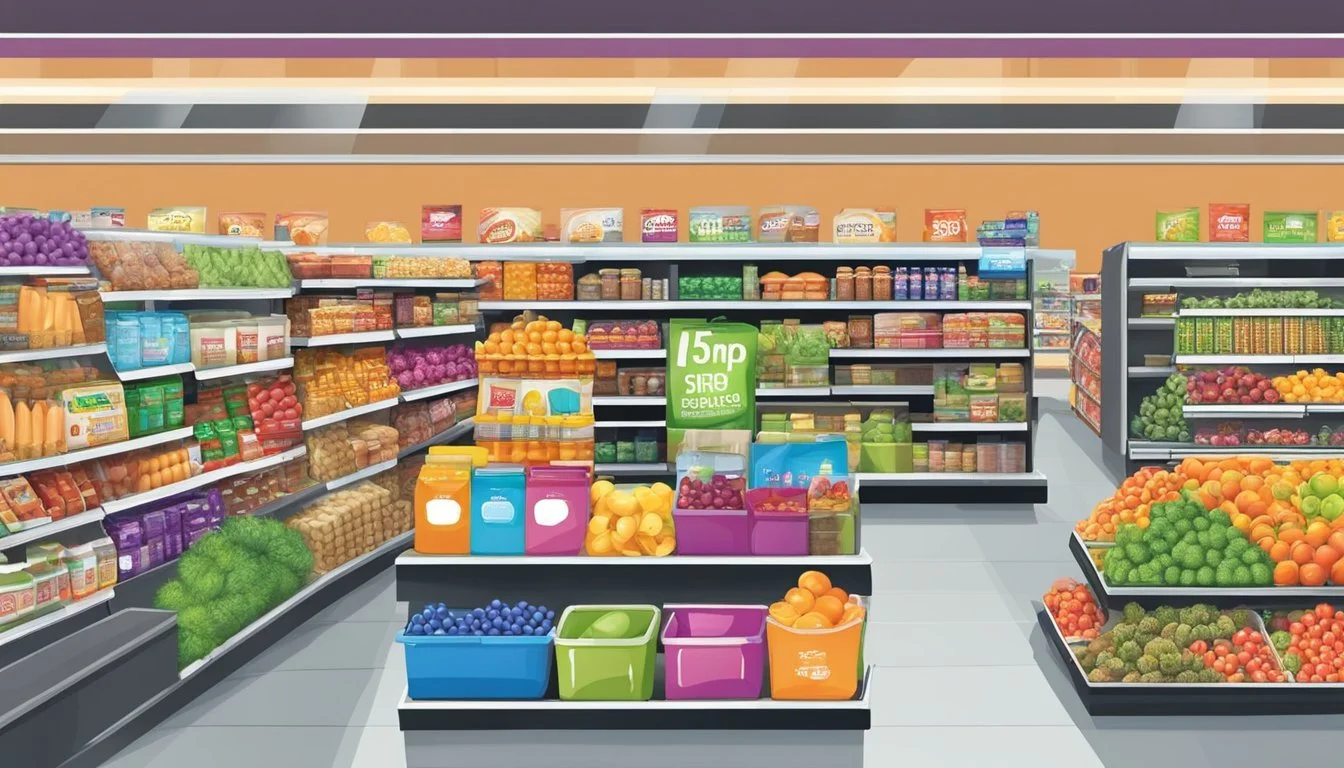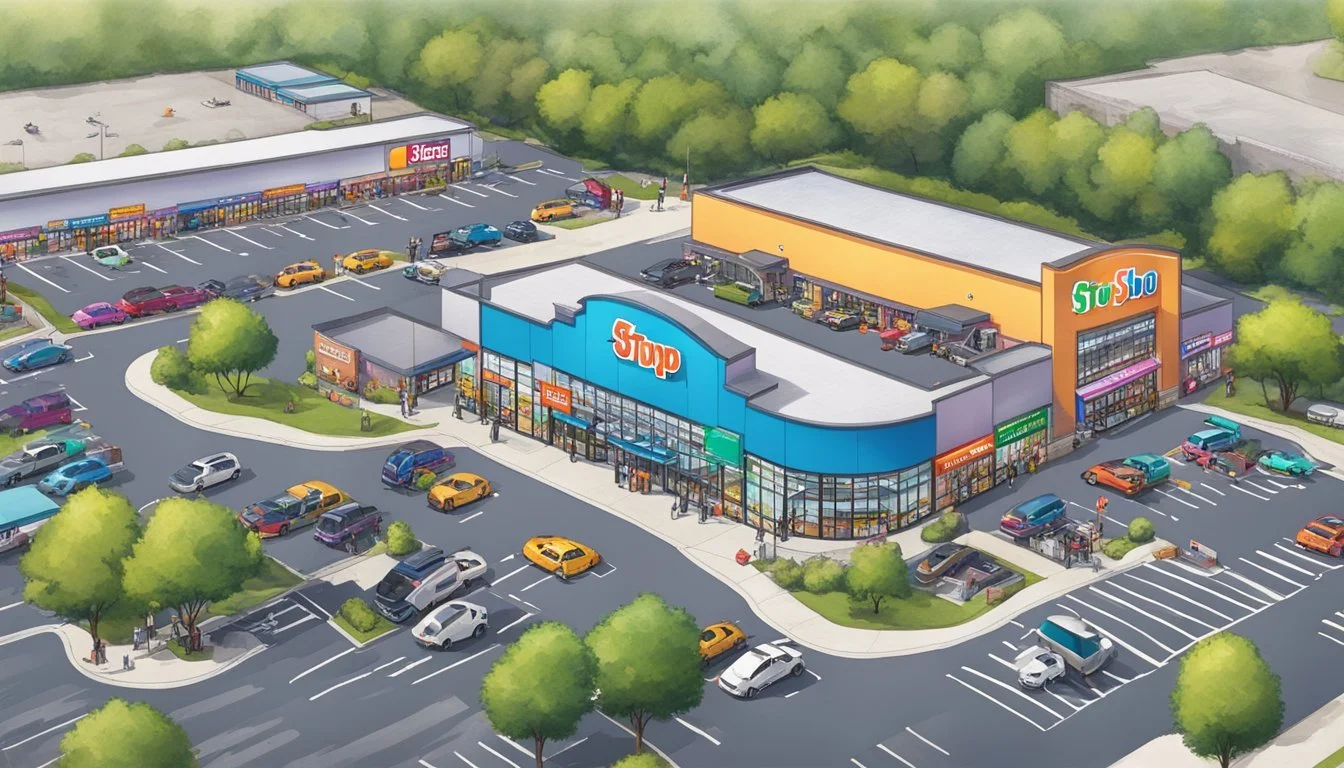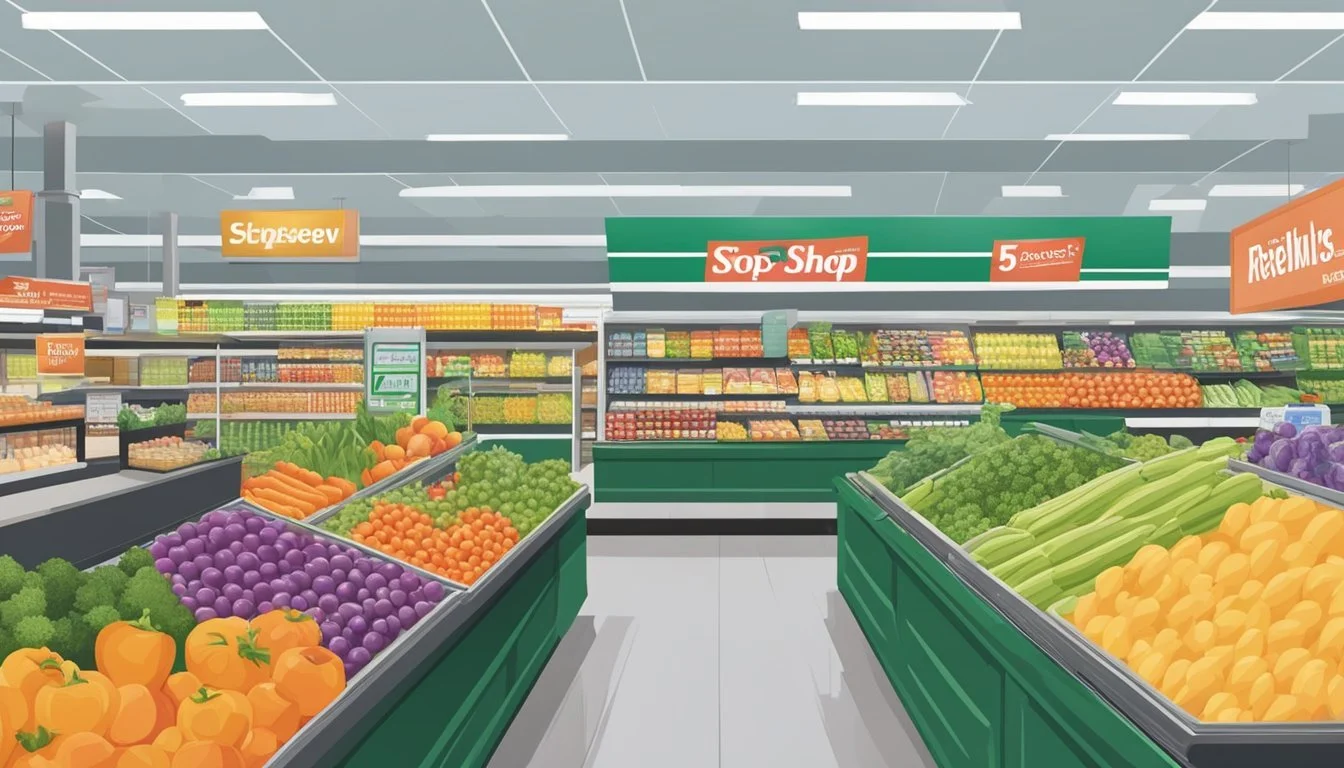Five Below vs Stop & Shop
A Comprehensive Comparison of Budget-Friendly Options
When it comes to grocery shopping, consumers often find themselves weighing their options between different stores. Five Below and Stop & Shop are two retailers that cater to different market segments, making a direct comparison challenging. Five Below specializes in low-priced items across various categories, while Stop & Shop is a traditional grocery chain with a wider range of products.
Stop & Shop boasts over 400 locations throughout the Northeast, offering a comprehensive selection of groceries, produce, and household items. While Stop & Shop tends to have higher prices compared to some competitors, it provides a more extensive array of products and potentially better accessibility for many consumers. Five Below, on the other hand, focuses on offering trendy items at $5 or less, which may include some food and beverage options but not a full grocery selection.
Choosing between these two stores depends largely on individual shopping needs. Stop & Shop is better suited for those seeking a one-stop shop for their weekly grocery haul, while Five Below appeals to bargain hunters looking for inexpensive novelty items and limited food options.
Overview of Five Below and Stop & Shop
Five Below and Stop & Shop are prominent retailers with distinct offerings and market positions. Both have established strong presences in the northeastern United States, catering to different consumer needs.
History and Background
Five Below opened its first store in 2002 in Wayne, Pennsylvania. Founded by David Schlessinger and Tom Vellios, the company focuses on selling products priced at $5 or less, targeting teens and pre-teens. Five Below has experienced rapid growth, reaching over 1,000 stores nationwide.
Stop & Shop traces its roots back to 1914 when it began as a small grocery store in Somerville, Massachusetts. Now owned by Ahold Delhaize, Stop & Shop has evolved into a major supermarket chain. The company has adapted to changing consumer preferences, introducing self-service formats and expanding its product offerings over the years.
Store Locations and Reach
Five Below has expanded its footprint across the United States. As of 2024, the company operates over 1,200 stores in numerous states. Its presence is particularly strong in the Northeast, including New Jersey, New York, and Pennsylvania.
Stop & Shop maintains a focused presence in the Northeast. The chain operates more than 400 stores across New England, New York, and New Jersey. Key markets include Massachusetts, Connecticut, Rhode Island, and parts of New York. This regional concentration allows Stop & Shop to tailor its offerings to local preferences and maintain efficient distribution networks.
Range of Products Offered
Five Below and Stop & Shop offer distinctly different product ranges, reflecting their unique retail focuses. Five Below emphasizes affordable variety items, while Stop & Shop provides a comprehensive grocery selection.
Product Variety and Categories
Five Below specializes in trendy, low-cost merchandise across various categories. It offers items like toys, games, tech accessories, beauty products, and home decor. The store's inventory changes frequently, featuring seasonal items and current trends.
Stop & Shop, as a full-service supermarket, provides a wide array of grocery products. Its aisles stock fresh produce, meats, dairy, frozen foods, and pantry staples. The store also carries household essentials, health and beauty items, and a selection of general merchandise.
Stop & Shop's product range is more extensive in food categories. It offers a broader selection of fresh produce, meats, and dairy products compared to Five Below's limited food offerings.
Quality of Items
Five Below focuses on affordability, with most items priced at $5 or less. The quality of products can vary, but generally aligns with the low price point. Many items are novelty or impulse purchases rather than long-lasting goods.
Stop & Shop maintains a higher standard for food quality, especially in perishable departments. Its produce section offers fresh fruits and vegetables, while the meat department provides various cuts and poultry options. The store's bakery produces fresh bread and pastries daily.
Stop & Shop also carries national brand products, ensuring consistent quality across many items. Its store brand products often offer good quality at lower prices.
Exclusive Products and Brands
Five Below features its own exclusive brands across various categories. These include "Ten Below" for slightly higher-priced items and "Five Beyond" for products over $5. The store also carries limited-time collaborations with popular brands and influencers.
Stop & Shop offers several private label brands, including "Nature's Promise" for organic and natural products, "SB" for everyday essentials, and "Taste of Inspirations" for premium items. These exclusive brands cover a wide range of grocery categories, from produce to prepared foods.
Stop & Shop's meat department often includes locally sourced options and specialty cuts. The store's bakery produces unique items like custom cakes and artisanal breads. Its deli section frequently features exclusive prepared foods and specialty cheeses.
Pricing and Value Proposition
Five Below and Stop & Shop offer distinct pricing strategies and value propositions for shoppers. Their approaches to deals, discounts, and loyalty programs shape the overall shopping experience and potential savings for customers.
Comparing Price Points
Five Below maintains a consistent pricing model, with most items priced at $5 or less. This strategy appeals to budget-conscious shoppers looking for affordable everyday items and small indulgences. Stop & Shop, as a full-service grocery chain, has a wider price range across its product offerings.
Stop & Shop's prices tend to be higher than discount retailers like Walmart. A typical grocery basket at Stop & Shop costs more compared to budget-oriented competitors. However, Stop & Shop offers a broader selection of products, including premium and specialty items.
Five Below focuses on non-perishable goods, toys, and accessories, making direct price comparisons with Stop & Shop challenging for most grocery staples.
Deals and Discounts
Both retailers employ different promotional strategies to attract customers. Five Below rarely offers additional discounts beyond its $5-and-under pricing model. The company relies on its everyday low prices as its main draw.
Stop & Shop frequently runs sales and promotions on various products. Weekly circular ads feature discounted items across departments. The chain also offers digital coupons and personalized deals through its app.
Seasonal sales events at Stop & Shop can provide significant savings on holiday-related items. Five Below, in contrast, maintains consistent pricing year-round with minimal fluctuations.
Loyalty Programs and Rewards
Stop & Shop's loyalty program, GO Rewards, allows customers to earn points on purchases. These points can be redeemed for discounts on gas or groceries. The program also provides access to exclusive digital coupons and personalized offers based on shopping habits.
Five Below does not currently offer a loyalty program or rewards system. The company's business model focuses on maintaining low prices across the board rather than incentivizing repeat purchases through a points-based system.
Stop & Shop's loyalty program can lead to additional savings for frequent shoppers, especially when combined with their regular promotions and sales events. This multi-faceted approach to value contrasts with Five Below's straightforward low-price strategy.
Customer Experience
Five Below and Stop & Shop offer distinct shopping experiences tailored to their target customers. Their approaches to store layout, checkout processes, and customer service vary significantly.
Store Accessibility and Layout
Five Below stores are typically located in shopping centers and strip malls, making them easily accessible to customers. The stores feature a bright, colorful layout organized into distinct sections or "worlds" for tech, sports, room decor, party supplies, style, crafts, candy, and seasonal items.
Stop & Shop supermarkets are often standalone locations or anchor stores in shopping plazas. They have a more traditional grocery store layout with aisles organized by product categories. Produce, deli, bakery, and meat departments are usually located around the store's perimeter.
Five Below's compact size allows for quick browsing, while Stop & Shop's larger format accommodates a wider range of products and services.
Checkout Process and Convenience
Five Below emphasizes a fast checkout experience with multiple registers and self-checkout options in some locations. Their streamlined process caters to customers making smaller, impulse purchases.
Stop & Shop offers various checkout options, including traditional cashier lanes, self-checkout kiosks, and mobile scan-and-go technology in select stores. The supermarket chain also provides online ordering with curbside pickup and home delivery services for added convenience.
Both retailers accept multiple payment methods, including cash, credit cards, and mobile payments.
Customer Service and Support
Five Below maintains a lean staffing model, with employees focused on restocking and cashier duties. Customer service is primarily self-serve, with limited personalized assistance available.
Stop & Shop offers more comprehensive customer service, including staffed service counters for deli, bakery, and pharmacy departments. They also provide dedicated customer service desks for returns, exchanges, and inquiries.
Both retailers have loyalty programs, but Stop & Shop's program tends to be more robust, offering personalized discounts and gas rewards. Five Below's rewards program is simpler, focusing on birthday perks and exclusive offers.
Additional Services Offered
Five Below and Stop & Shop offer distinct additional services to enhance the shopping experience. These range from convenient delivery options to various in-store amenities aimed at meeting diverse customer needs.
Grocery Delivery Options
Five Below does not provide grocery delivery services as it primarily focuses on non-food items. Stop & Shop, however, offers robust delivery options. Customers can choose same-day delivery through Instacart or use Stop & Shop's own delivery service.
The store's delivery service covers a wide range of products, including fresh produce, meat, and pantry staples. Delivery fees vary based on order size and time slot. Stop & Shop also provides a "pickup" option where customers can order online and collect their groceries at a designated store location.
In-Store Services
Five Below's in-store services are limited due to its discount store format. The chain focuses on self-service shopping with minimal additional amenities.
Stop & Shop offers a variety of in-store services. These include:
Pharmacy counters with prescription filling and consultations
Coin-counting machines for easy currency exchange
Western Union money transfer services
Floral departments for fresh bouquets and arrangements
Deli counters with made-to-order sandwiches
Self-checkout lanes for quick purchases
Many Stop & Shop locations also feature Starbucks cafes, providing a convenient spot for shoppers to relax or grab a coffee while running errands.
Market Position and Competition
Five Below and Stop & Shop occupy distinct positions in the retail landscape. Five Below focuses on discount merchandise, while Stop & Shop is a traditional grocery chain. Their competitive strategies and market challenges differ significantly.
Competitor Analysis
Five Below faces competition from dollar stores and discount retailers. Its main rivals include Dollar Tree, Dollar General, and Walmart's discount sections. Five Below's niche is trendy, low-cost items appealing to teens and young adults.
Stop & Shop competes in the crowded Northeast grocery market. Its key competitors are ShopRite, Wegmans, and Hannaford. Walmart and Target also pose threats with their expanded grocery offerings.
Stop & Shop struggles to differentiate itself in pricing and quality. Market Basket and Walmart offer lower prices, potentially saving customers over $2,300 annually on a $250 weekly grocery budget.
Whole Foods and Amazon present challenges in the premium and online grocery segments. Stop & Shop must innovate to remain competitive against these diverse rivals.
Company Values and Commitments
Five Below and Stop & Shop prioritize different aspects of corporate responsibility. Their approaches to sustainability and community engagement reflect their distinct business models and target demographics.
Sustainability Efforts
Five Below focuses on reducing waste in its operations. The company has implemented recycling programs in stores and distribution centers. It also uses energy-efficient lighting and HVAC systems to lower its carbon footprint.
Stop & Shop takes a more comprehensive approach to sustainability. The grocery chain has committed to achieving zero food waste by 2030. It donates unsold food to local food banks and composts inedible items. Stop & Shop also offers a wide selection of eco-friendly products and encourages customers to bring reusable bags.
Community Involvement
Five Below engages in community support through its Five Below Foundation. The organization provides grants to youth-focused nonprofits across the country. It also encourages employees to volunteer in their local communities.
Stop & Shop has deep roots in community involvement. The company partners with local schools to provide nutritional education programs. It also supports food banks and hunger relief organizations through regular food drives and financial donations. Stop & Shop's community efforts often focus on addressing food insecurity in the areas it serves.









